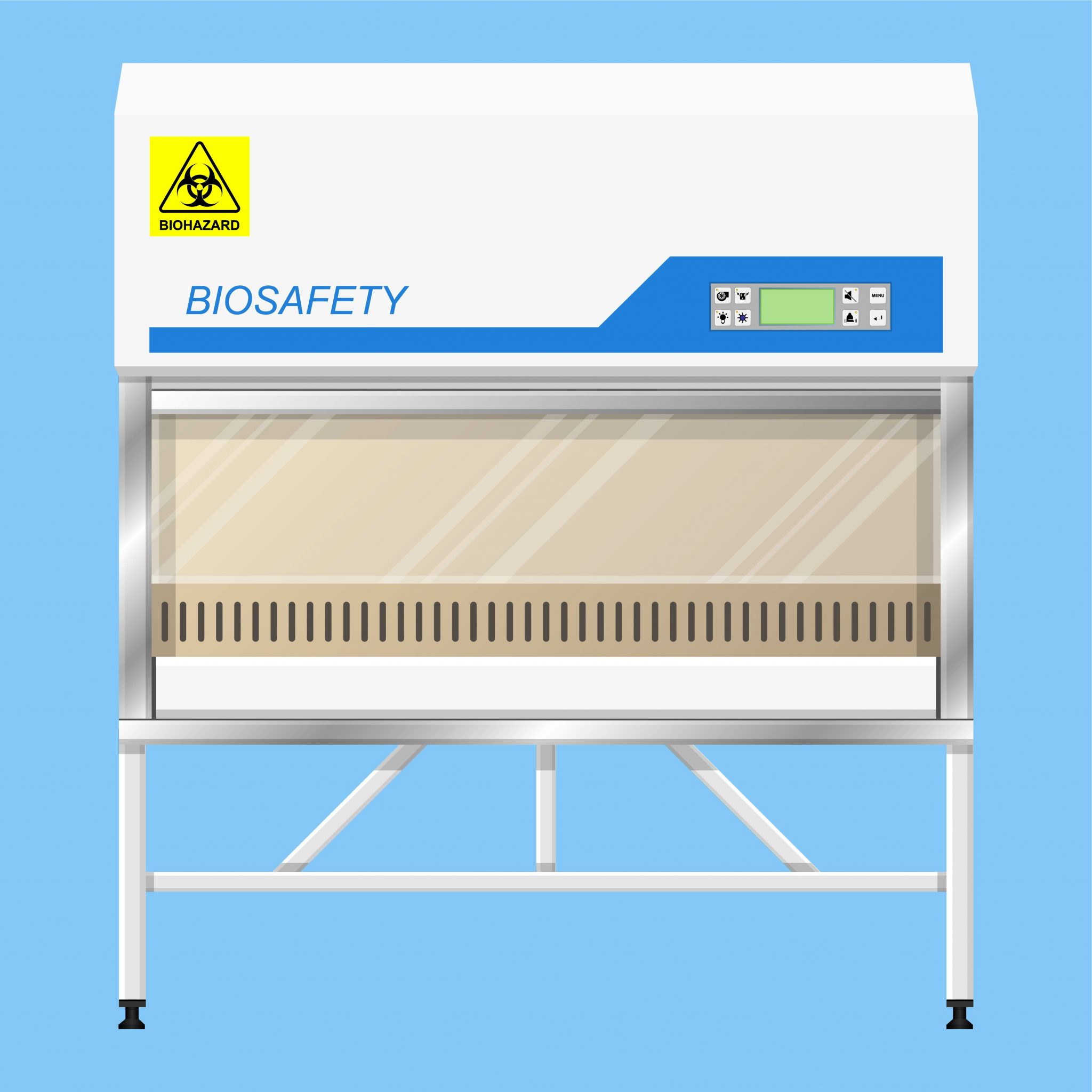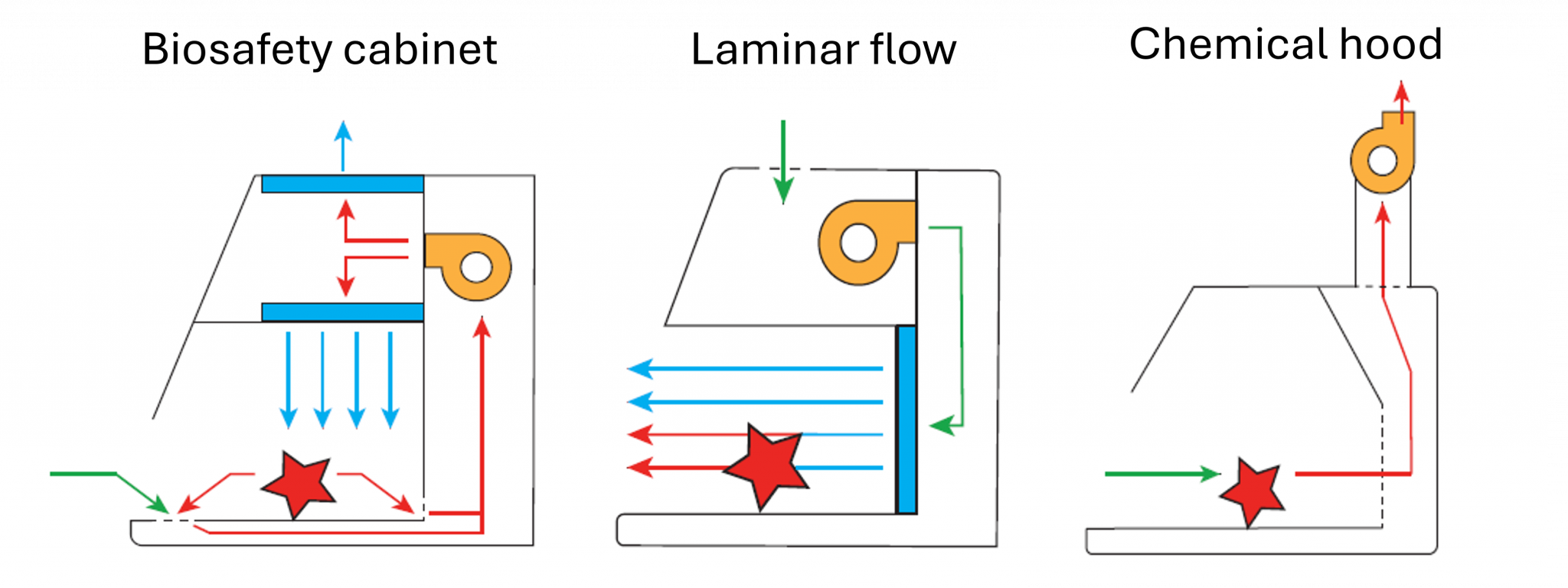
When working with microorganisms, care must be taken to protect:
- the user against infections
- the environment from contamination
A biosafety cabinet meets both these criteria, as it is a physical barrier consisting of an airflow to protect the user from aerosols, and a glass screen to protect the user from minor spills and splashes.
As they often look alike, it is important to be able to recognize the difference between a biosafety cabinet, a laminar flow and a fume hood:

Note that a biosafety cabinet protects the user against particles and aerosols, but not against chemical vapors. When working with volatile chemicals, a chemical fume hood is required. In a laminar flow station, the air flow is directed towards the operator, so it does not protect the user, but only the sample.
A biosafety cabinet protects the user only if it is used correctly:
- Wear gloves, long-sleeved lab coat and safety glasses. For biosafety level 2 environments (BSL2/P2 laboratories), lab coat has to be water repellent, it has to have elastic cuffs, it has to go down to the knees, and gloves must cover the sleeves of the lab coat so as not to leave the skin of the forearm unprotected
- The forearms must be parallel and at the same level of the work surface
- The user’s face should stay behind the protective glass
- Movements should be performed slowly, so as not to disturb the air flow
- For the same reason, the biosafety cabinet should not be located near a door, other nearby operators should walk slowly, and no large equipment or Bunsen burners should be used inside
- Front and rear grids should be kept free of clutter